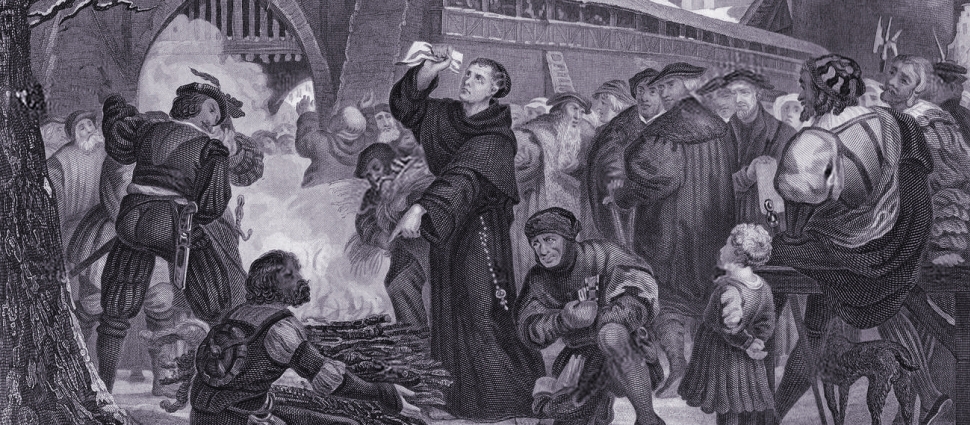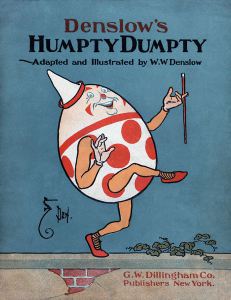Reading Humpty Dumpty with N.T. Wright

September 21, 2010

From Jason Hood
Tom Wright Reads Humpty Dumpty
Humpty Dumpty sat on a wall
Clearly the writer is telling an Israel story, and here alludes to the Temple. This echoes other lines in early 2nd Nursery Literature, such as Mother Hubbard’s cupboard (the “storehouse” of the Temple) and the bone (resurrection life) which she sought for her dog (“Gentiles”). “But when she got there, the cupboard was bare and the poor little doggie had none.” The temple had nothing to offer the Gentiles, and they thus remained in their state of Adamic sin and decay.
So here, too, one should not be surprised to discover that the Temple and its “wall” are bankrupt. The next line, then, is not a shock, but an expectation:
Humpty Dumpty had a great fall
Again, this is patently a forecast of the Temple’s destruction (and contra Crossan and Borg, an entirely possible historical forecasting). Doubtless this claim is intended to lead the reader to ponder the eschatological recreation of the Temple. Since Humpty stands for the Temple, he seems to be sharing in the divine identity, functioning as the locus of God’s presence, not outside of, but within creation.
Of course, this fall is an exile of sorts, the loss of God’s presence. The tension is palpable: how will humpty’s story not turn out dumpty? In other words, this line presupposes what I have called elsewhere the great metanarrative of humpty, not least the promise of resurrection.
But all the king’s horses and all the king’s men couldn’t put humpty together again.
So the Temple will be built again, but not by human hands. Many have undertaken to suggest that this passage runs counter to a belief in resurrection. But this atomistic reading of the text lacks imagination. Of course, it is the king himself who will put humpty together again, and this great act will complete the metanarrative.
After all, Humpty is the place where the Creator God is resident with his creation. But the human inability to recreate Humpty does not negate all human effort for creation, which should be done in light of the proleptic nature of the king’s restoration of Humpty and all creation.
Written in Durham Cathedral, dedicated to Rowan Williams’s left eyebrow.
Humpty Dumpty sat on a wall
Clearly the writer is telling an Israel story, and here alludes to the Temple. This echoes other lines in early 2nd Nursery Literature, such as Mother Hubbard’s cupboard (the “storehouse” of the Temple) and the bone (resurrection life) which she sought for her dog (“Gentiles”). “But when she got there, the cupboard was bare and the poor little doggie had none.” The temple had nothing to offer the Gentiles, and they thus remained in their state of Adamic sin and decay.
So here, too, one should not be surprised to discover that the Temple and its “wall” are bankrupt. The next line, then, is not a shock, but an expectation:
Humpty Dumpty had a great fall
Again, this is patently a forecast of the Temple’s destruction (and contra Crossan and Borg, an entirely possible historical forecasting). Doubtless this claim is intended to lead the reader to ponder the eschatological recreation of the Temple. Since Humpty stands for the Temple, he seems to be sharing in the divine identity, functioning as the locus of God’s presence, not outside of, but within creation.
Of course, this fall is an exile of sorts, the loss of God’s presence. The tension is palpable: how will humpty’s story not turn out dumpty? In other words, this line presupposes what I have called elsewhere the great metanarrative of humpty, not least the promise of resurrection.
But all the king’s horses and all the king’s men couldn’t put humpty together again.
So the Temple will be built again, but not by human hands. Many have undertaken to suggest that this passage runs counter to a belief in resurrection. But this atomistic reading of the text lacks imagination. Of course, it is the king himself who will put humpty together again, and this great act will complete the metanarrative.
After all, Humpty is the place where the Creator God is resident with his creation. But the human inability to recreate Humpty does not negate all human effort for creation, which should be done in light of the proleptic nature of the king’s restoration of Humpty and all creation.
Written in Durham Cathedral, dedicated to Rowan Williams’s left eyebrow.
HT: Jason Hood




